How do I convert my WMV file to DOCX? 
It's really simple to convert your video file (*.wmv) to a Microsoft Word format file (*.docx) with Sonix. Just follow these six easy steps:
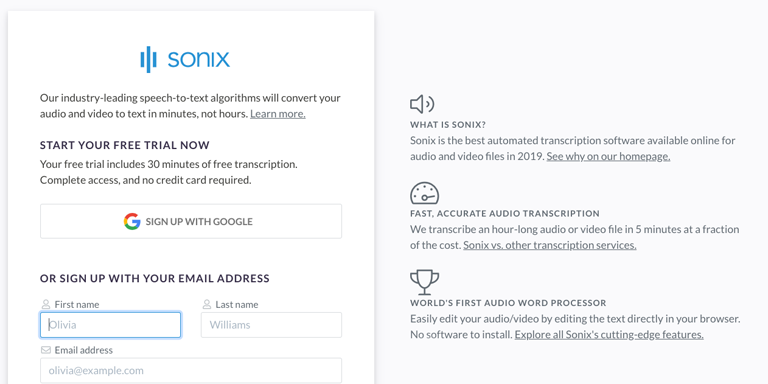
Step 1
Sign up for a free Sonix trial account—includes 30 minutes of free speech to docx conversion.
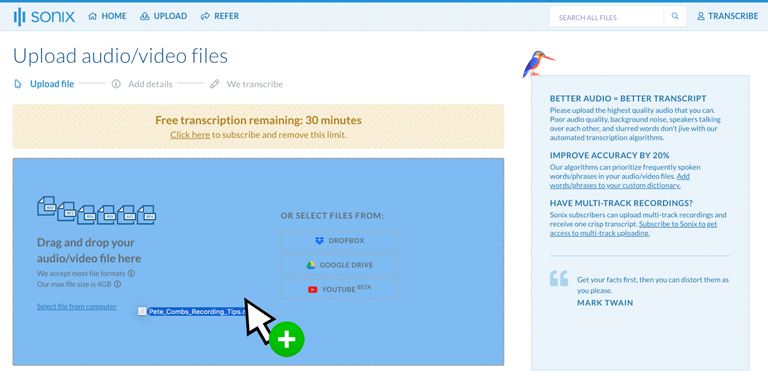
Step 2
Upload your Windows Media Video File file(s) (*.WMV) from your computer, Dropbox, or Google Drive.
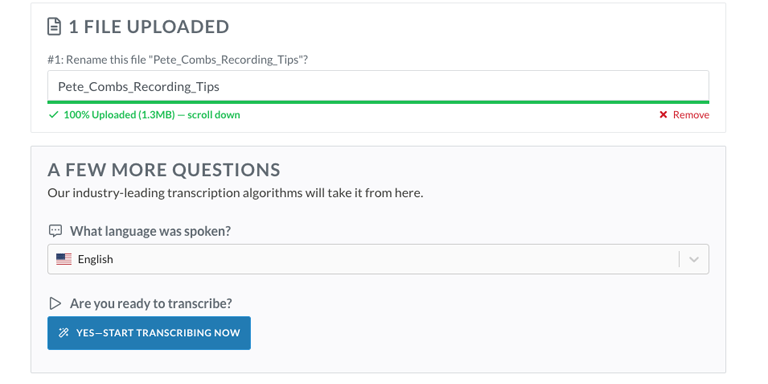
Step 3
Select the language spoken in your WMV file. We support over 53 different languages. Then click the button 'Start Transcribing Now.'
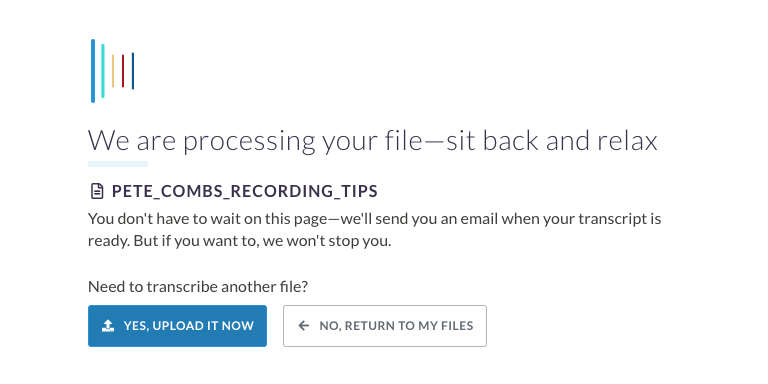
Step 4
Sonix automatically extracts the audio from your WMV file and converts it to the Microsoft Word .docx format. It'll only take a few minutes so you can grab some coffee.

Step 5
Use the Sonix AudioText Editor to polish your DOCX transcript. Simply correct any words in your browser.
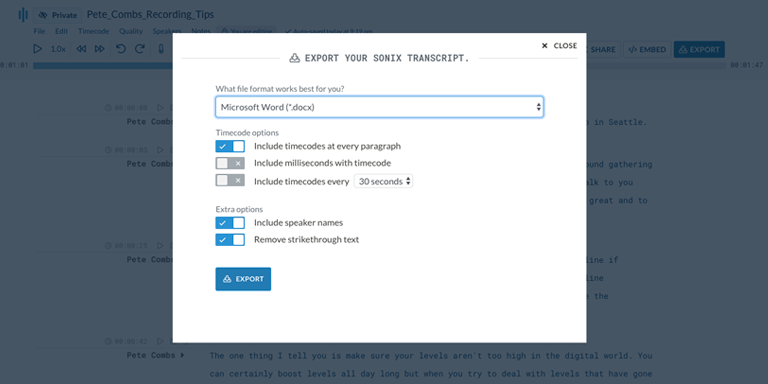
Step 6
Click the 'Export' button. Select 'Microsoft Word (.docx)' from the dropdown to download a docx version of your WMV file.
That's it! Wasn't that easy? Your WMV file has now been converted to text!
Thousands of incredible customers trust Sonix to transcribe their WMV files 
Frequently Asked Questions for Windows Media Video File (*.WMV) to docx 
What is a WMV file?
WMV files, also known as Windows Media Video files, are a compressed video format developed by Microsoft for Internet streaming. Many videos available online are stored in the WMV format. WMV file sizes are smaller so that they are easier to transmit over broadband and mobile networks without sacrificing picture quality and audio clarity. The WMV file is one of the most common files used to store video in Windows. You may see the file when downloading video from the Internet or when someone shares a video via USB device or email. You can watch video stored in WMV files with a variety of media players. Windows Video and Media Player are popular choices since they come installed with many Windows operating systems. Microsoft Windows Media Player 9 was the last version of the Windows Media Player developed for Mac OS X. However, Mac users can use Flip4Mac WMV (also known as Microsoft Windows Media Components for QuickTime) to play WMV files.
Does Sonix transcribe video files with a *.WMV file extension?
Yes, Sonix does automatically transcribe video files with a .WMV file extension. Sonix is an online video to text converter. Convert any audio (mp3, m4a, wav, ...) or video (wmv, mp4, mov, avi, ...) file to text without installing any software! Sonix quickly and accurately transcribes *.WMV files and converts them to text in a docx format.
Know anyone who needs to convert Windows Media Video File (.WMV) to docx?
We'd appreciate it if you tell them about Sonix—the best way to convert WMV to docx.
Other ways to convert your WMV video files with Sonix 
WMV to text
Use the most accurate speech-to-text technology to convert files: WMV to text.
WMV to PDF
Easily transcribe your WMV file to Adobe's Portable Document Format (pdf) so you can share them with colleagues.
WMV to subtitles
Create subtitles for your WMV files to make them more accessible for your audience.
WMV to srt
Quickly create subtitles from your WMV files and save them as SRTs, one of the most widely supported subtitle formats.
WMV to VTT
Create more advanced captions for your WMV files by using the latest caption format VTT (Video Text Tracks).
WMV to captions
Quickly and easily create closed captions for your WMV files so you can embed them in your video files.
Add subtitles to WMV files
Quickly and easily add subtitles to your MP4 video files with the power of automated transcription.
Convert Windows Media Video File to Microsoft Word (.docx) version with Sonix 
Sonix automatically transcribes and translates your audio/video files in 53+ languages. Easily search, edit, and share your media files. Sonix is an automated speech to text service that quickly converts files in the Windows Media Video File (.WMV) format to Microsoft Word (.docx). Sonix does this conversion for you with the highest quality. Fast, accurate, and affordable. Millions of users from all over the world.
Includes 30 minutes of free transcription











